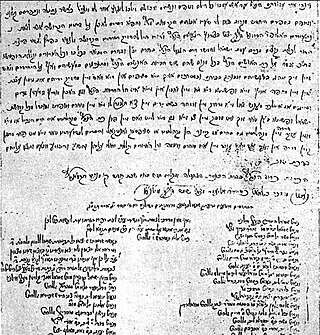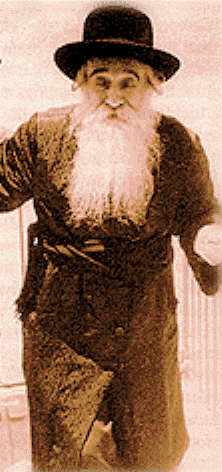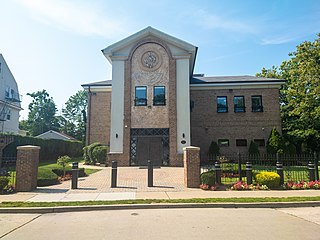A rabbi is a spiritual leader or religious teacher in Judaism. One becomes a rabbi by being ordained by another rabbi—known as semikha—following a course of study of Jewish history and texts such as the Talmud. The basic form of the rabbi developed in the Pharisaic and Talmudic eras, when learned teachers assembled to codify Judaism's written and oral laws. The title "rabbi" was first used in the first century CE. In more recent centuries, the duties of a rabbi became increasingly influenced by the duties of the Protestant Christian minister, hence the title "pulpit rabbis", and in 19th-century Germany and the United States rabbinic activities including sermons, pastoral counseling, and representing the community to the outside, all increased in importance.

A Rebbe or Admor is the spiritual leader in the Hasidic movement, and the personalities of its dynasties. The titles of Rebbe and Admor, which used to be a general honor title even before the beginning of the movement, became, over time, almost exclusively identified with its Tzaddikim.

Misnagdim was a religious movement among the Jews of Eastern Europe which resisted the rise of Hasidism in the 18th and 19th centuries. The Misnagdim were particularly concentrated in Lithuania, where Vilnius served as the bastion of the movement, but anti-Hasidic activity was undertaken by the establishment in many locales. The most severe clashes between the factions took place in the latter third of the 18th century; the failure to contain Hasidism led the Misnagdim to develop distinct religious philosophies and communal institutions, which were not merely a perpetuation of the old status quo but often innovative. The most notable results of these efforts, pioneered by Chaim of Volozhin and continued by his disciples, were the modern, independent yeshiva and the Musar movement. Since the late 19th century, tensions with the Hasidim largely subsided, and the heirs of Misnagdim adopted the epithet Litvishe or Litvaks.

Yeshiva Torah Vodaas is a yeshiva in the Kensington neighborhood of Brooklyn, New York.
Boyan is a Hasidic dynasty named after the town of Boiany in the historic region of Bukovina, now in Ukraine. The Hasidut is headquartered in Jerusalem, with communities in Beitar Ilit, Bnei Brak, Manchester, Australia, Beit Shemesh, London, Antwerp, Manhattan, Brooklyn, Los Angeles, Monsey, Lakewood, and Atlanta. Boyan is one of the branches of the Ruzhiner dynasty, together with Bohush, Chortkov, Husiatyn, Sadigura, Kapishnitz, Vaslui and Shtefanesht.
Dushinsky is one of the few Hasidic dynasties not named after the place where it originated; instead, it is named after the rebbe's surname. It is relatively new, and became a dynasty in Jerusalem, where it is centered today. Unlike other Hasidic groups, it does not originate from a Hasidic background, but from the talmidim (students) of Moses Sofer.

Jewish meditation includes practices of settling the mind, introspection, visualization, emotional insight, contemplation of divine names, or concentration on philosophical, ethical or mystical ideas. Meditation may accompany unstructured, personal Jewish prayer, may be part of structured Jewish services, or may be separate from prayer practices. Jewish mystics have viewed meditation as leading to devekut. Hebrew terms for meditation include hitbodedut or hitbonenut/hisbonenus ("contemplation").

Kalonymus Kalman Shapira, was the Grand Rabbi of Piaseczno, Poland, who authored a number of works and was murdered by the Nazis during the Holocaust.

Chachmei Lublin Yeshiva was a Jewish educational institution (yeshiva) that operated in the city of Lublin, Poland from 1930 to 1939. At the time, it was one of the largest in the world.

Stanton Street Synagogue, also known as Stanton Street Shul and Congregation Bnai Jacob Anshei Brzezan, is a historic synagogue located at 180 Stanton Street on the Lower East Side of Manhattan, New York. It was constructed in 1913 by a landsmanshaft from the town of Brzeżany in southeast Galicia. The first Rabbi of the congregation, in their first building, was Rabbi Judah Leib Rose (1867-1946). He had arrived in New York in 1909 and encouraged the congregation to build the Shul on Stanton Street.
Rimanov is the name of a Hasidic rabbinical dynasty within Orthodox Judaism. The dynasty originated in Rymanów in Poland's Subcarpathian Voivodeship.

Nachum Dov Brayer is the Rebbe of the Boyan Hasidic dynasty. He is the grandson of the former Boyaner Rebbe of New York, Rabbi Mordechai Shlomo Friedman. On Hanukkah 1984, at the age of 25, he was crowned Boyaner Rebbe. He lives in Jerusalem.

Mordechai Shlomo Friedman, sometimes called Solomon Mordecai Friedman, was the Boyaner Rebbe of New York for over 40 years. In 1927 he left Europe to become one of the first Hasidic Rebbes in America, establishing his court on the Lower East Side of New York City and attracting many American Jewish youth with his charismatic and warm personality. He also played a role in American Jewish leadership with positions on Agudath Israel of America, the Moetzes Gedolei HaTorah, and Holocaust rescue organizations. In 1957 he built the flagship Ruzhiner yeshiva, Tiferet Yisroel, at the top of Malkhei Yisrael Street in Jerusalem.
Radomsk is a hasidic dynasty named after the town of Radomsko in Łódź province, south-central Poland. The dynasty was founded in 1843 by Shlomo Hakohen Rabinowicz. His son, grandson and great-grandson also led the dynasty, which had thousands of followers. On the eve of World War II, Radomsk was the third largest Hasidic dynasty in Poland, after Ger and Alexander.
Rabbi Chaim Moshe Yehuda Hakohen Blau (1912–2003) was a German-born rabbi, lecturer and author. He published about 40 volumes of never before seen Rishonim.
Chabad hipsters are the cross-acculturated members of the Chabad Hasidic community and contemporary hipster subculture. Beginning from the late 2000s through the 2010s, a minor trend of cross acculturation of Chabad Hasidism and hipster subculture appeared within the New York Jewish community. The first printed reference to this trend was the 2007 New York Press cover story, "Hipster Hassids" by Alyssa Pinsker. Later, according to The Jewish Daily Forward, a significant number of members of the Chabad Hasidic community, mostly residing in Crown Heights, Brooklyn, appear to now have adopted various cultural affinities of the local hipster subculture.
Israel ben Eliezer or Yisroel ben Eliezer, known as the Baal Shem Tov or as the Besht, was a Jewish mystic and healer who is regarded as the founder of Hasidic Judaism. "Besht" is the acronym for Baal Shem Tov, which means "Master of the Good Name," a term for a holy man who wields the secret name of God.
Yosef Tzvi Dushinsky is the third Rebbe of the Dushinsky Hasidic dynasty of Jerusalem, Israel. He assumed the leadership of the Hasidut upon the death of his father, Rabbi Yisroel Moshe Dushinsky, second Dushinsky Rebbe, in 2003. The Dushinsky Hasidic movement was founded by his grandfather and namesake, Rabbi Yosef Tzvi Dushinsky, in Jerusalem in the 1930s. Both his father and grandfather also served as Gaavad of the Edah HaChareidis.

Congregation Aish Kodesh is an Orthodox synagogue in Woodmere, New York. Led since its founding in 1992 by Rabbi Moshe Weinberger, the synagogue was named after the Piaseczna Rav, Rabbi Kalonymus Kalman Shapira, known by the name of his last work, Aish Kodesh, who was a leading Polish Hasidic rabbi in prewar Europe. By injecting Hasidic elements into the prayer services, social events, and daily classes, Aish Kodesh has been called a "phenomenon" and a "revolution" in the religious community of Long Island.









